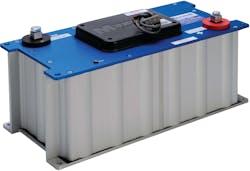As carbon emissions continue to grow and the cost of fuel rises, the world is increasingly searching for alternative means of transportation. This includes different forms of hybrid-electric and pure-electric drive systems, also referred to as new energy vehicles. The engineering resources and technology required to successfully bring these new systems to market can take time and be cost-prohibitive in the early stages.
Once the technology becomes mature and production volumes increase, the costs of the new technology will be reduced significantly. In the case of hybrid-electric buses, the additional cost of the hybrid system will ultimately pay for itself due to the fuel cost savings. The additional benefit is the reduction in carbon emissions enabled by these systems.
Some countries with a strong desire to clean up their air and reduce fuel consumption have implemented subsidy programs to help offset the initial technology development costs and encourage the adoption of these new technologies. One successful example is China’s National Program 863, which encompasses many different industries and projects, including new energy vehicle technology development. For public transit buses, the program not only offers incentives for original equipment manufacturers (OEMs) and their tier-one suppliers to develop the systems, but also rewards the public transit company that ultimately buys the bus. Due to China’s subsidy program, a public transportation company can purchase a hybrid-electric bus for about the same price as a traditional bus, while also enjoying a 25 to 30 percent reduction in fuel costs in addition to cleaner air.
China initiated its public transit bus subsidy program in 2008 and budgeted to run it for five years. Initially the program was available for 13 major cities and included 1,000 hybrid buses per city over the five-year period. After about two years, the program was expanded to encompass more than 20 cities. The program officially concluded at the end of 2012, but due to the overwhelming success, the Chinese are now developing a new program with a slightly reduced subsidy. To bridge the gap between the two programs and keep the momentum going, the Chinese government announced a short-term subsidy program equivalent to the original program for 5,000 additional buses – this time available for any city in China.
New energy vehicles: pure-electric versus hybrid-electric transit bus in China
In the early stages of the program, several companies pursued pure-electric buses using different types of battery technologies. The lack of charging stations and infrastructure, limited battery power performance, battery maintenance costs and limited battery life were obstacles not easy to overcome. These companies are now considering pure-electric bus systems that combine ultracapacitors in parallel with batteries to improve the overall performance of the systems.
Ultracapacitors handle peak power much better than batteries and enable benefits such as reduced primary battery size, improved acceleration performance, increased energy-recapture capability, longer driving range on a single charge and longer battery life.
In the meantime, a small group of OEMs and new technology innovation companies are focused on developing the hybrid-electric drive train instead of pure-electric. Initially these companies also tried batteries for energy storage, but most quickly abandoned them due to some of the same obstacles encountered by the pure-electric bus developers. After changing to a pure ultracapacitor energy storage system, the problems went away. Since the ultracapacitors provide power to electric motors for the initial acceleration of the bus, there is no longer a need for a large, powerful diesel engine.
The hybrid-electric buses use diesel engines half the size of a traditional bus’s engine. The ultracapacitors’ high-efficiency energy-recapture capability negates the need for charging stations completely. In some cases where a certain bus route includes long hill climbs, the energy stored in the ultracapacitors may not be sufficient to climb the hill, and the reduced engine size could present a problem for a fully loaded bus. To resolve this potential problem, the system developers sometimes include an additional battery bank to power the motors for the hill climb only, but the system relies on ultracapacitors for the rest of the route.
The other important factor affecting the viability of these systems is the lifetime of the energy storage system. The extra cost of replacing an energy storage system too soon can defeat the cost-saving goal of the system. Ultracapacitors are rated to handle up to 1 million charge/discharge cycles before reaching the ends of their lives. For a hybrid-electric bus this can equate to an energy storage system lifetime of eight to 10 years or longer. Estimates of battery life in these systems have been reported as only four to five years.
Program success
More than 12,000 hybrid buses are in daily service in China with ultracapacitors. All of these buses use 25 percent less fuel than traditional buses and produce significantly less pollution. The total number of buses continues to grow, with bus manufacturers aiming to ultimately sell hybrid-electric buses with no government subsidy, which is possible with continued growth and technology advancements. The Chinese government subsidy program has been an enormous success and should be viewed as a model for other countries to emulate.
Brian Eichler is the director of sales and marketing for Maxwell Technologies ultracapacitor products in the Asia Pacific and Americas regions. He has been with Maxwell for 13 years and has 20 years of experience selling different types of high-technology products. Brian’s educational background includes studies in mechanical engineering and business administration at California State University, Long Beach.



